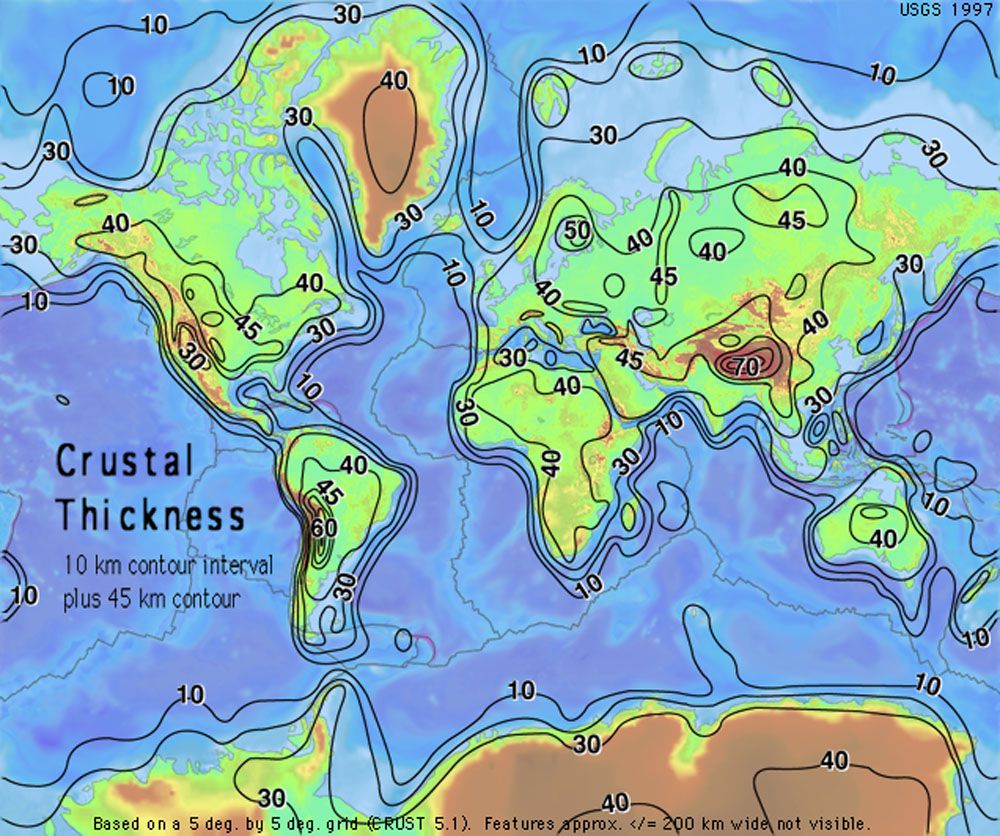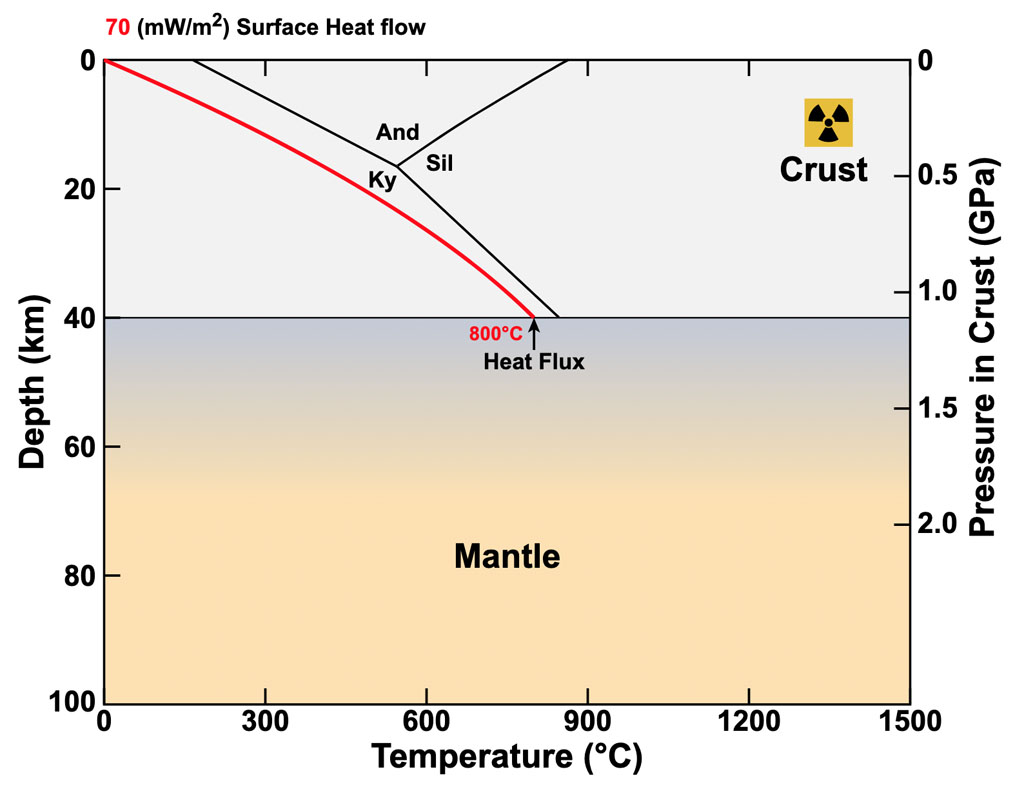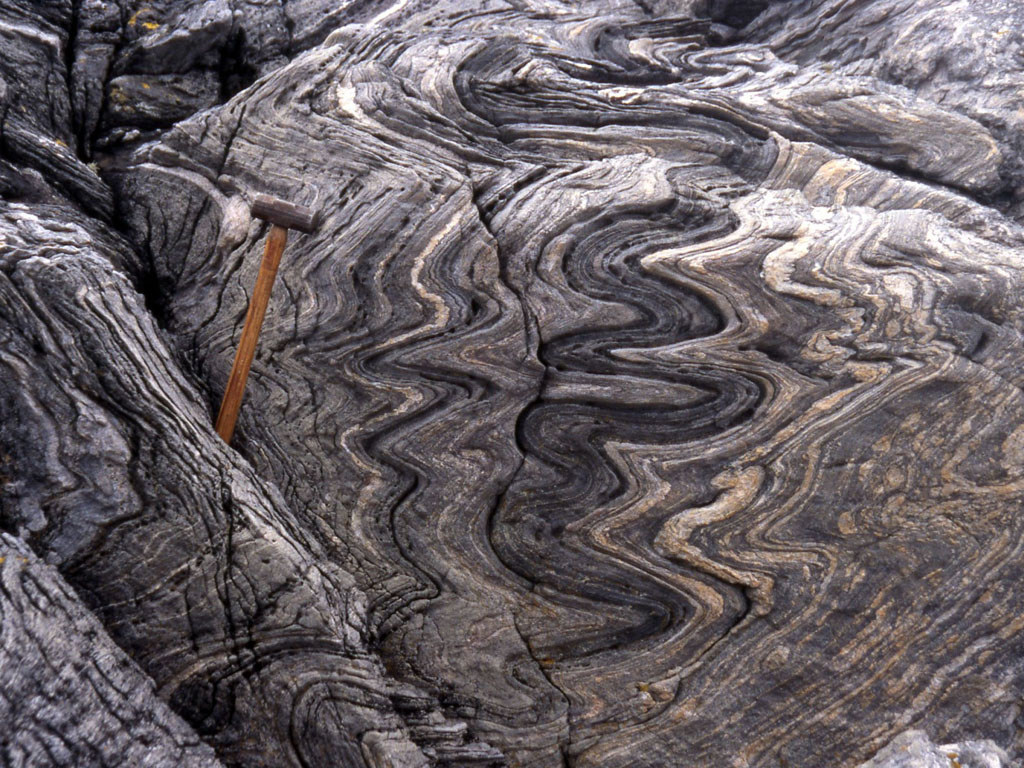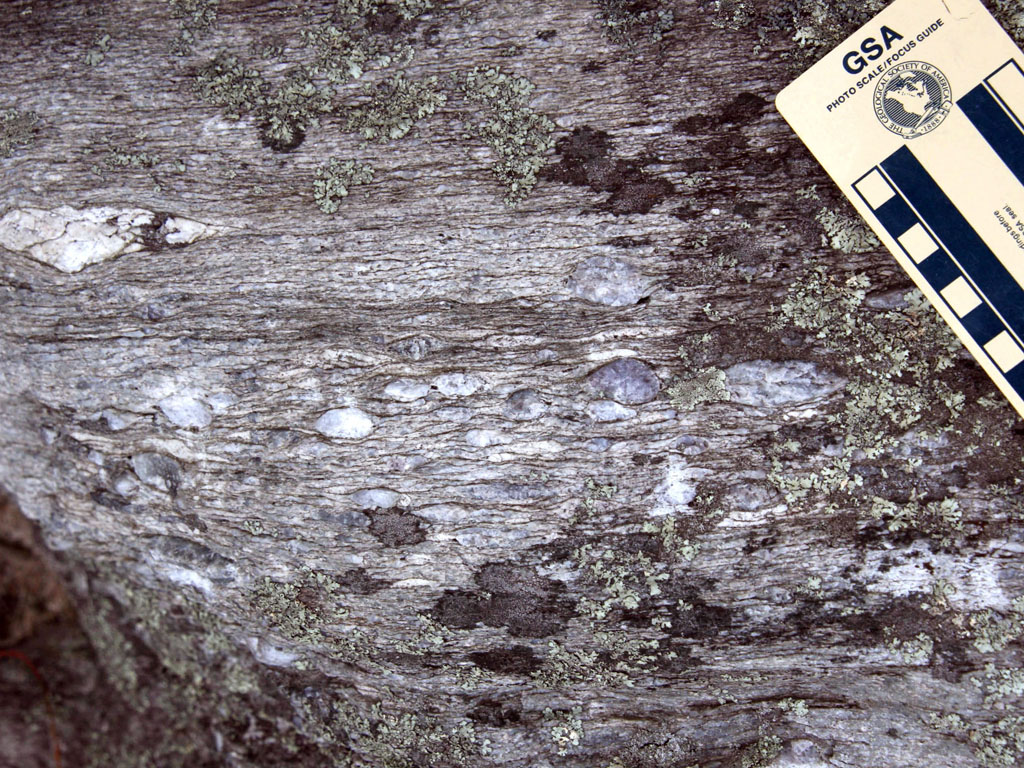In addition to heating, regional scale metamorphic rocks show evidence of pentrative, ductile deformation such as that shown in the folds and stretched pebbles in Figure 2.08 and Figure 2.09. This observation is consistent with continent-continent collisions being the cause of most regional metamorphism. What happens during a continent-continent collision that heats the rocks involved?

Figure 2.10. Crustal Thickness. A map of the earth with contours in kilometers showing the thickness of the crust. Click on the image to see a larger version with more information.
The earth is hot at depth because radioactive elements produce heat as they decay in rocks. Radioactive elements are concentrated in the earth's crust. In a stable continent, approximately half the heat flow at the surface is from radioactive heat produced in the crust and the other half of the heat flow comes from heat produced in the MUCH larger volume of the mantle and core. So if the crustal thickness is doubled, the heat flow at the surface should increase by 50% and the rate of temperature increase with depth must increase significantly. You can see this in a thermal model of the crust shown in Figure 2.11.

Figure 2.11. Crust Thermal Model. Temperature is shown in red as a function of depth based on a steady-state heat model. Click on the image to see a larger version with more information and sliders to change model parameters.
The heat conduction model of the crust shown in Figure 2.11 is based on a steady-state solution of the heat conduction equation. Although the crust in a continent-continent collision zone is not likely to achieve a steady-state geotherm, the model can be used to see the effects of various physical parameters on temperature variation with depth. Click on Figure 2.11 and use the slider to change the Crust Thickness. You will see that as the crust thickens, there is more heat flow at the surface and the temperature increases more rapidly with depth along a gradient that has changed to support the higher heat flow. In Figure 2.11 there are also sliders to change model parameters in addition to Crust Thickness.
The following questions about the crust thermal model may help you understand some of the controls on temperature in the crust. Enter your answer, then click the "Enter" button.
Yes. The model shows that a 61km thick crust will cause the geotherm to pass through the aluminosilicate triple point.
No. Be sure that you have not changed the other parameters in Figure 11, just the crust thickness. Try again.
Yes. The model shows a 61km thick crust will cause the geotherm to pass through the aluminosilicate triple point.
No. The model shows that a 61km thick crust will cause the geotherm to pass through the aluminosilicate triple point.
Q2. Which of the following changes to model parameters will increase the rate of temperature rise with depth for a constant crust thickness? Check all that apply.
Yes. "Yes!! You have correctly identified the 3 changes other than crustal thicking that will increase the temperature gradient with depth: lower thermal conductivity, raise crustal heat production, and raise mantle heat flux.
The thermal structure of a continent-continent collision is more complicated than the geotherm calculated by the steady-state model of Figure 2.11. But the model shows that crustal thickening can raise the temperature gradient in the crust enough to produce the mineral assemblages observed in regional metamorphic rocks.

